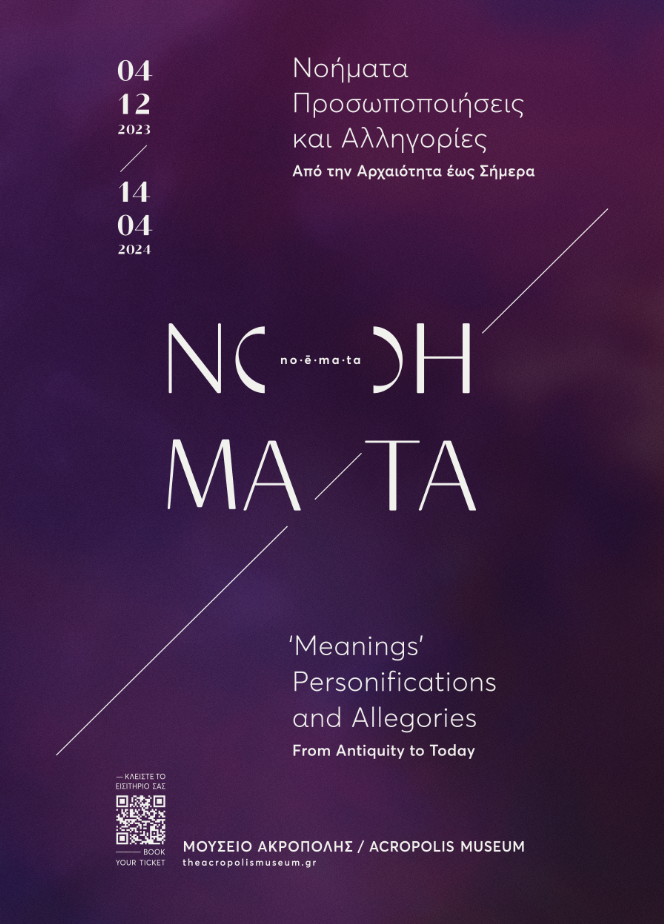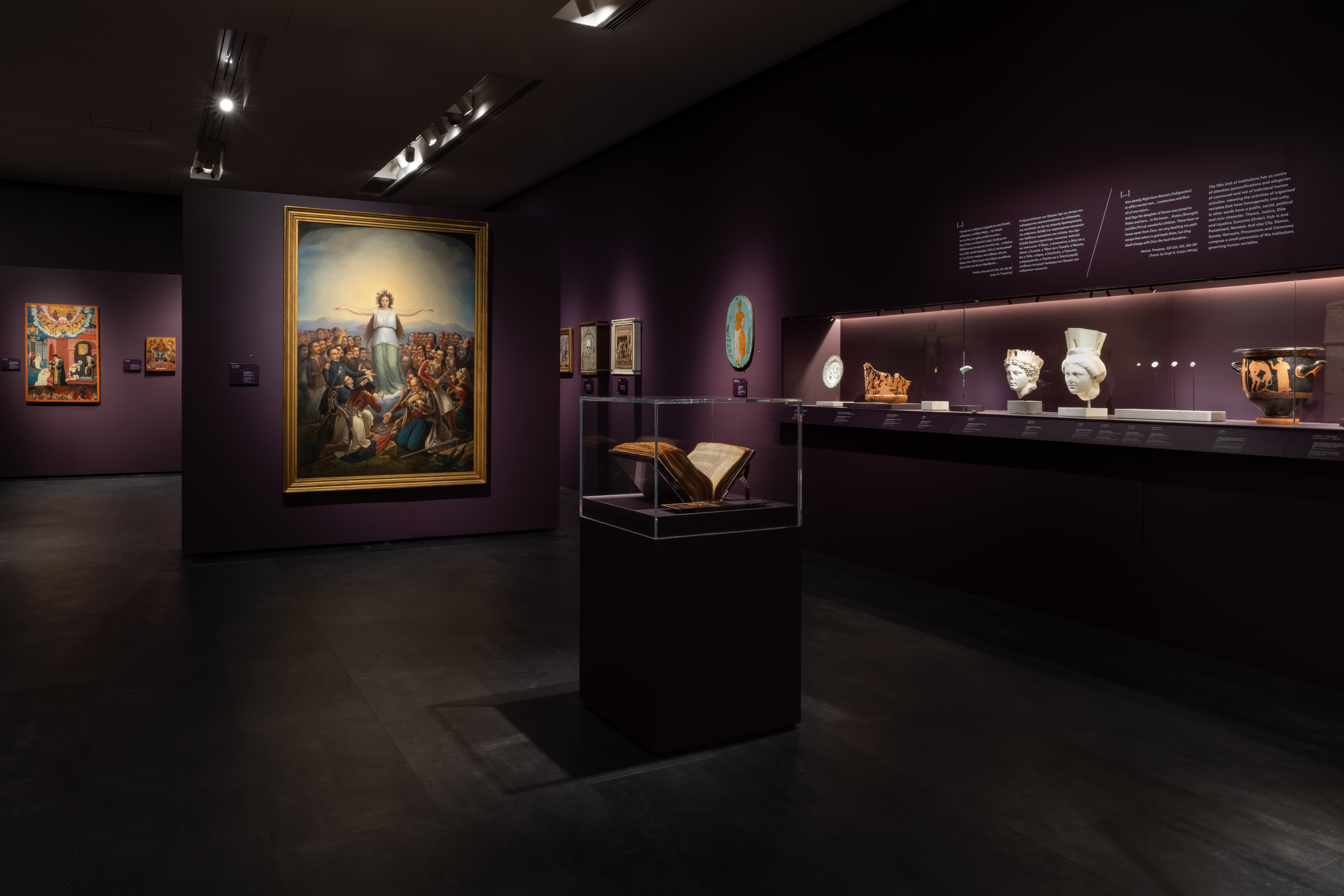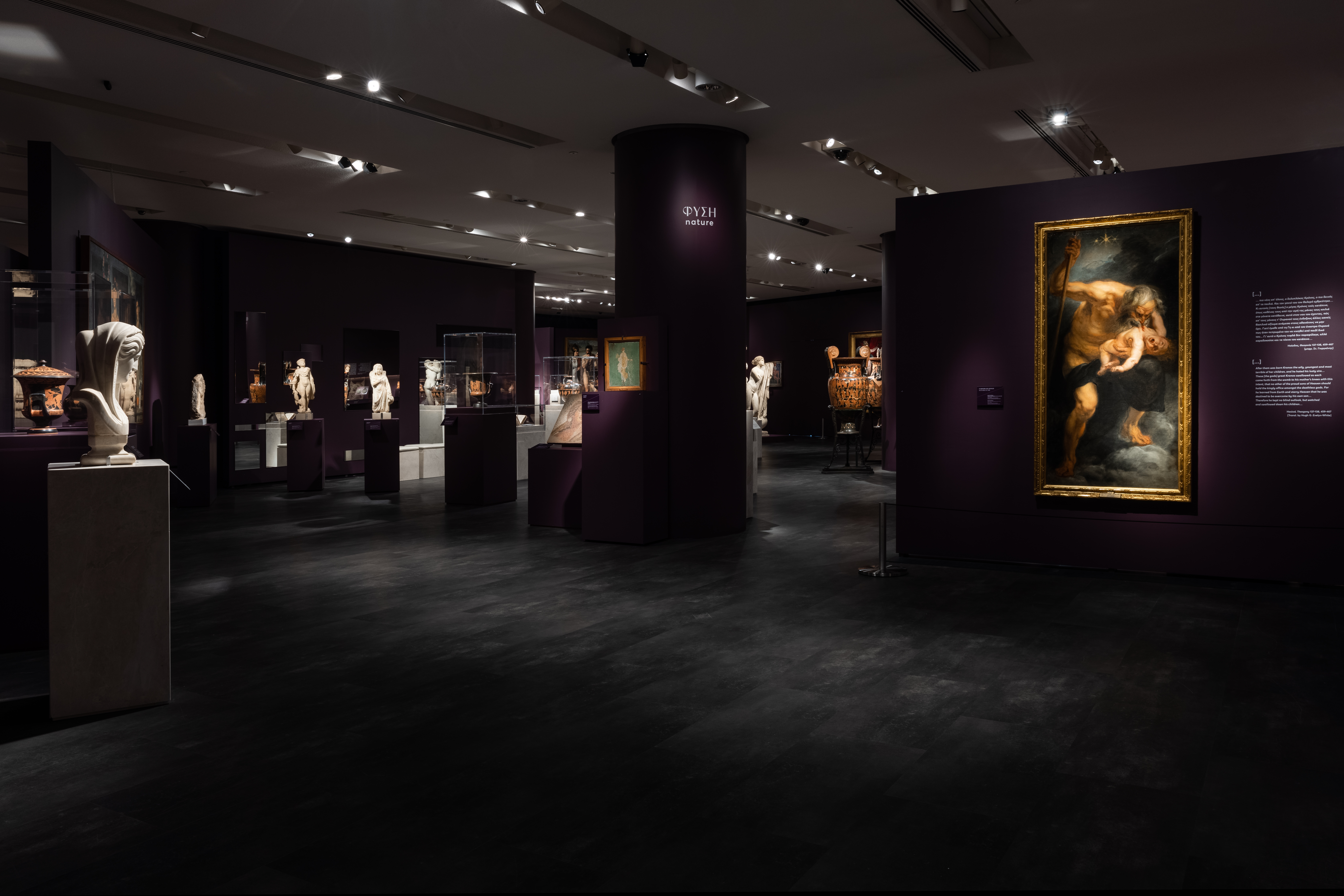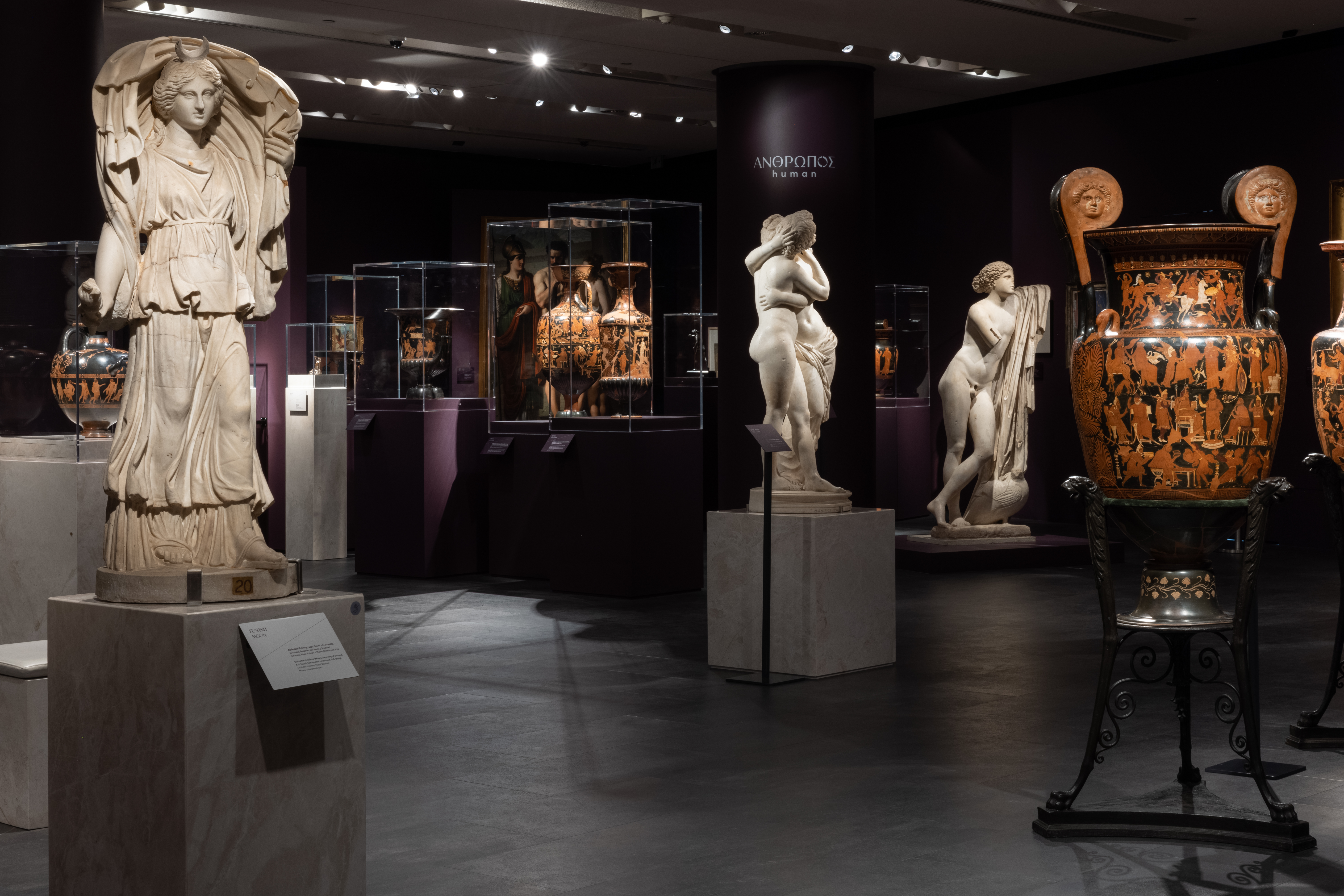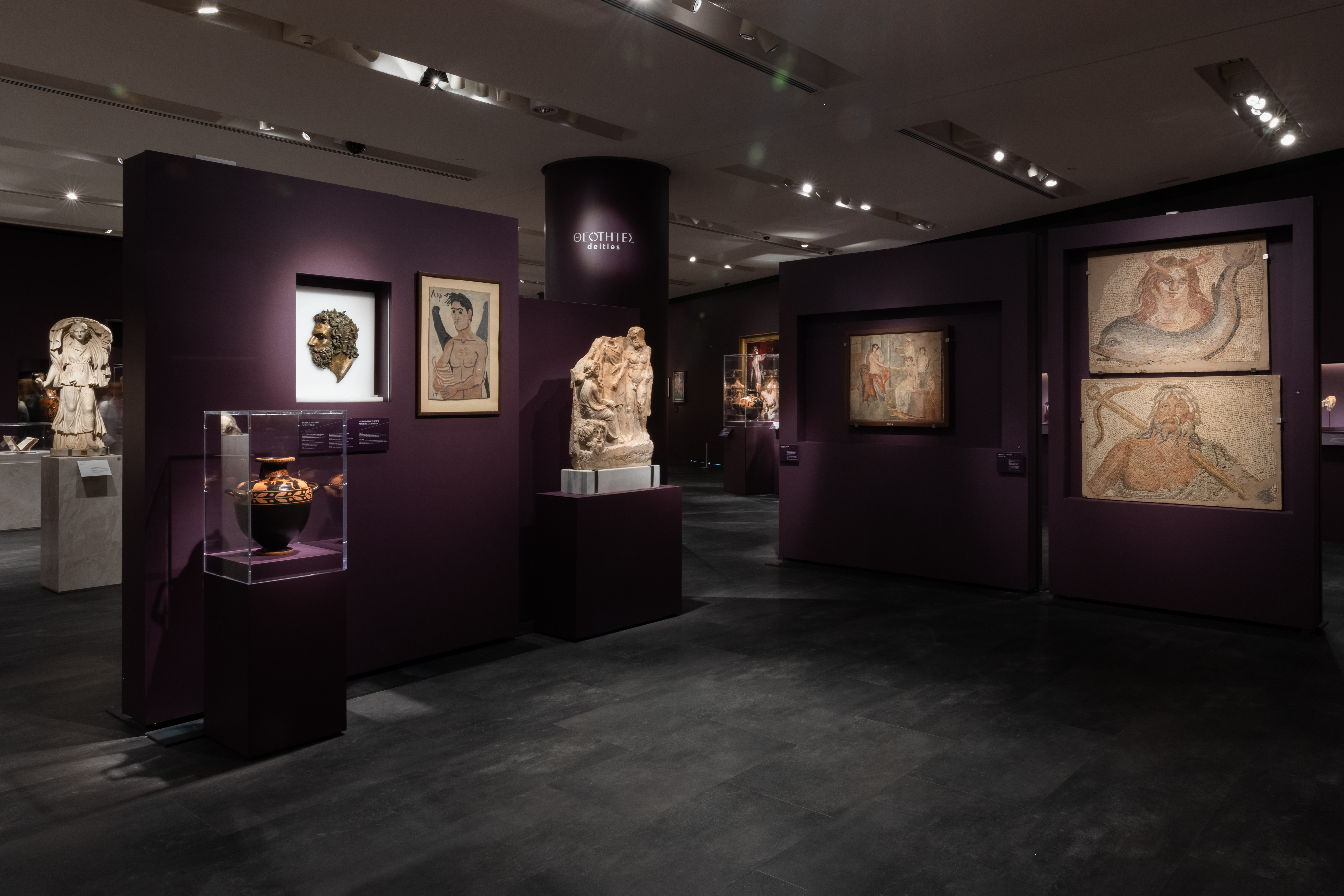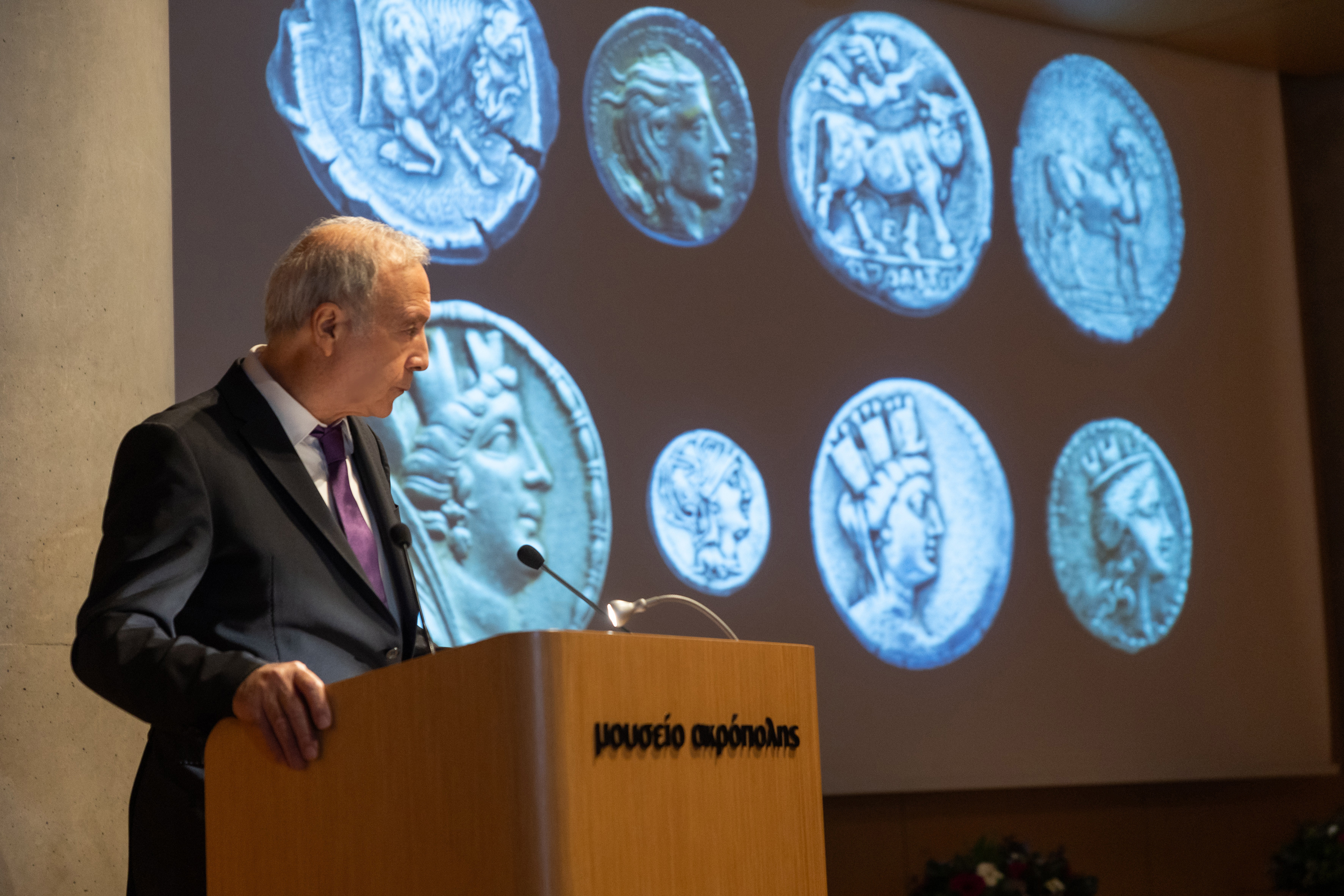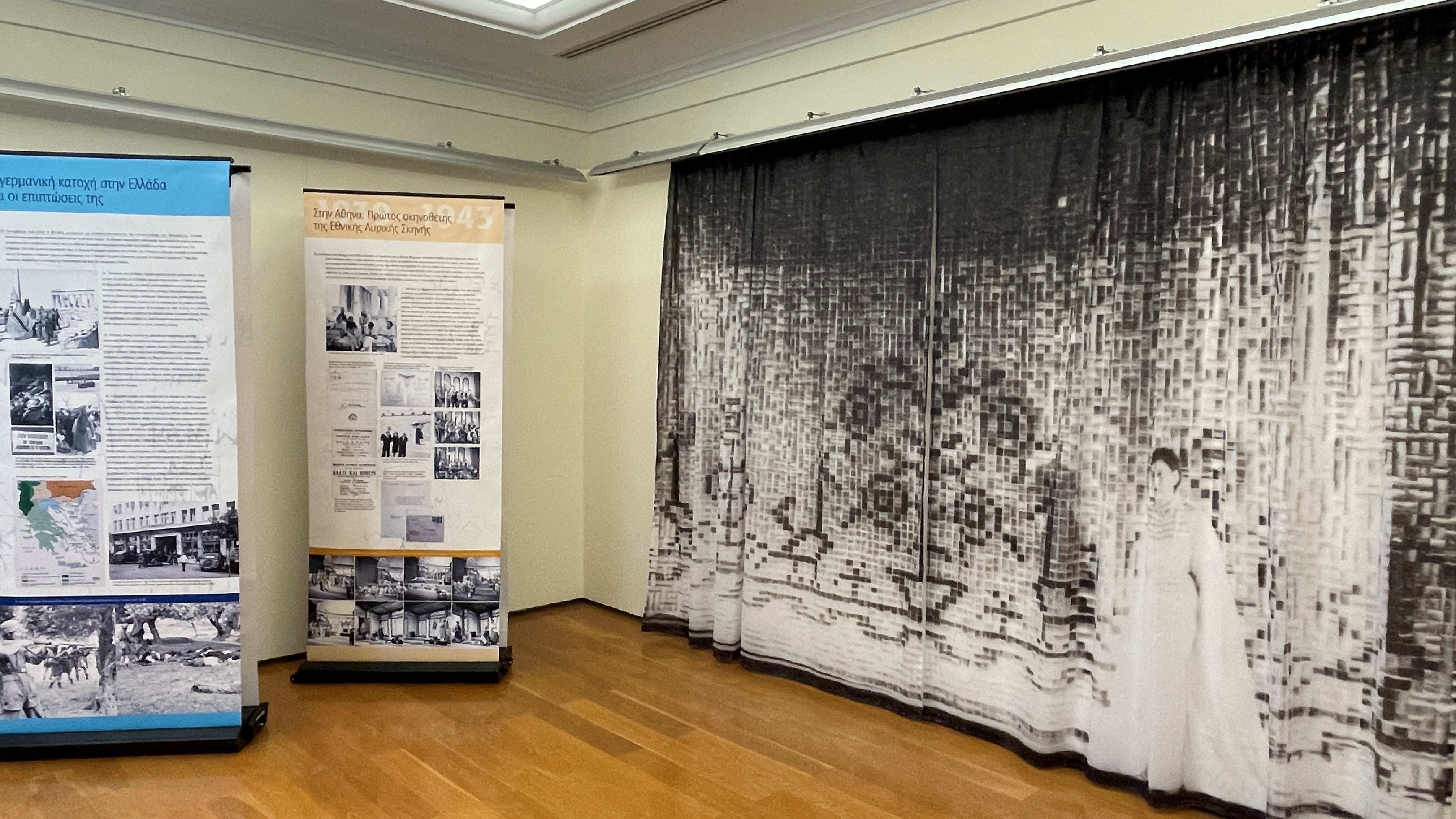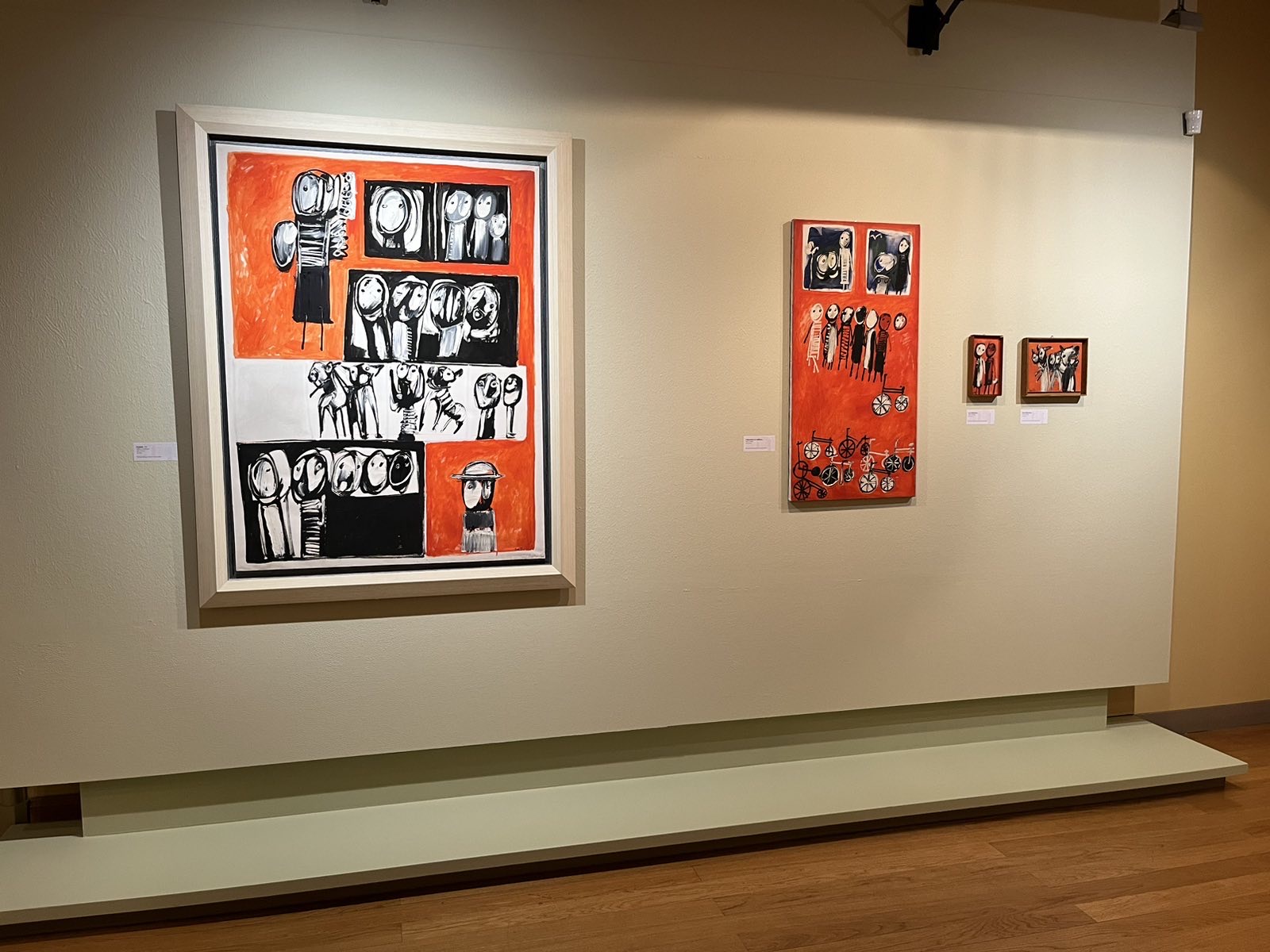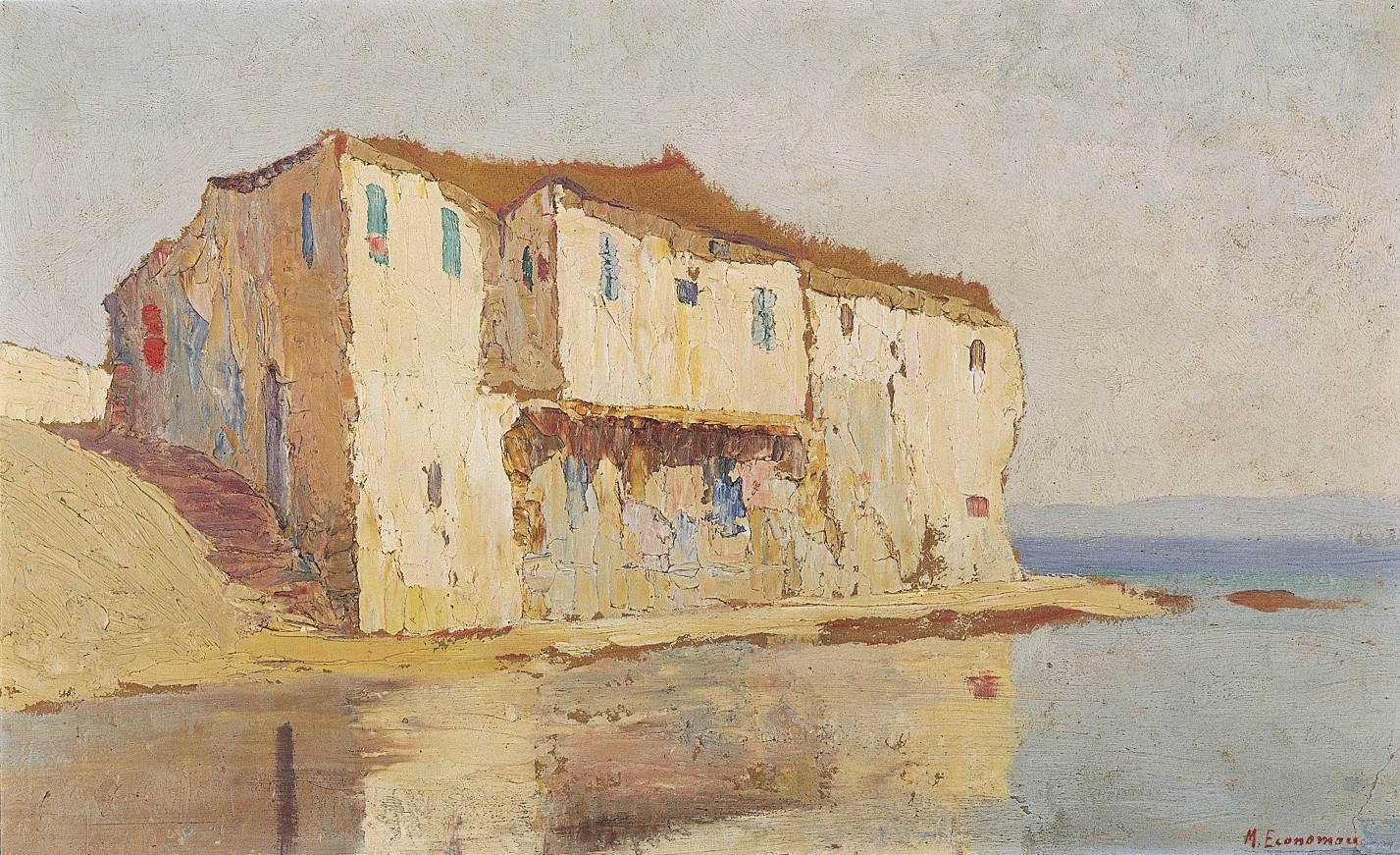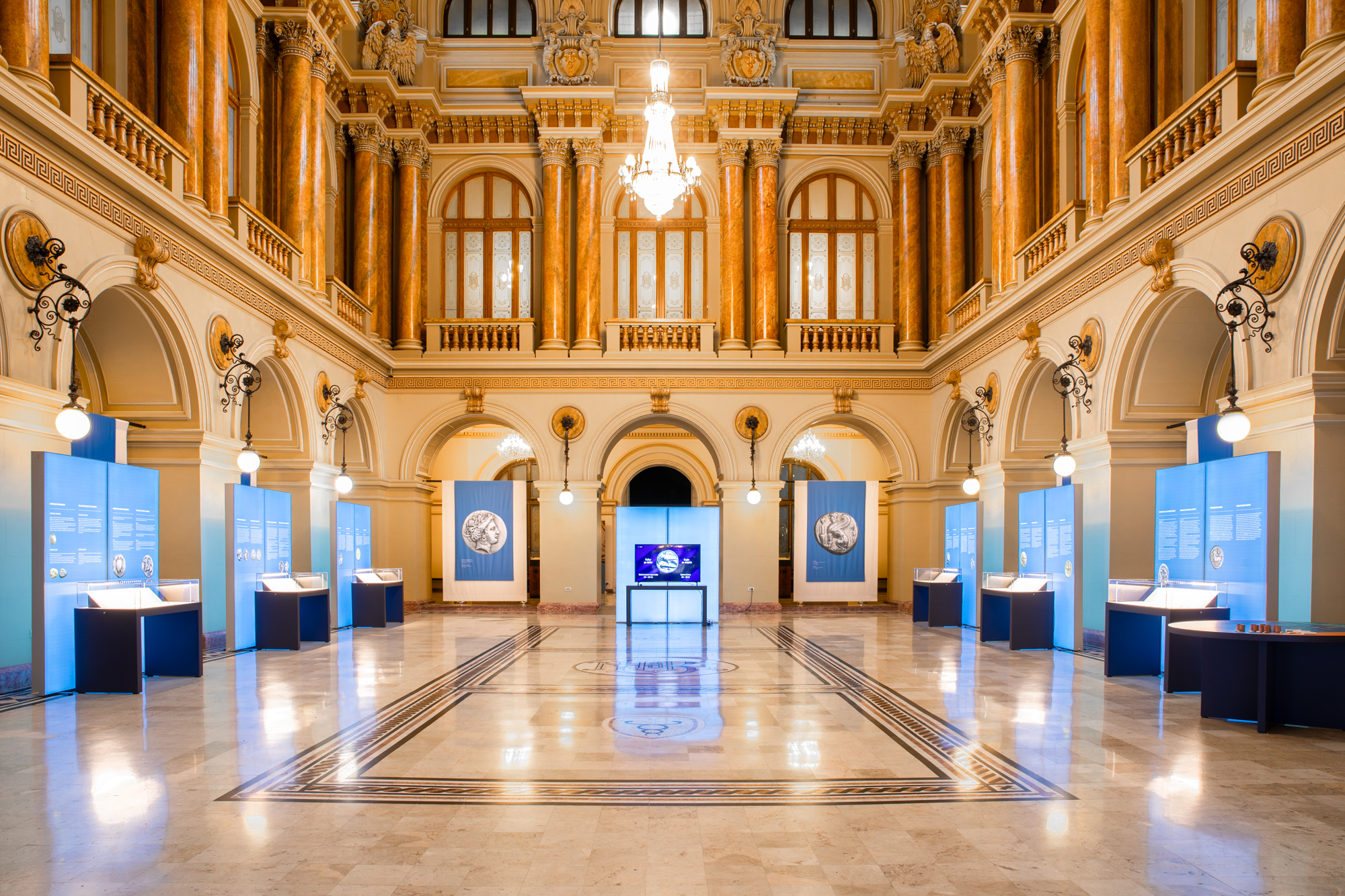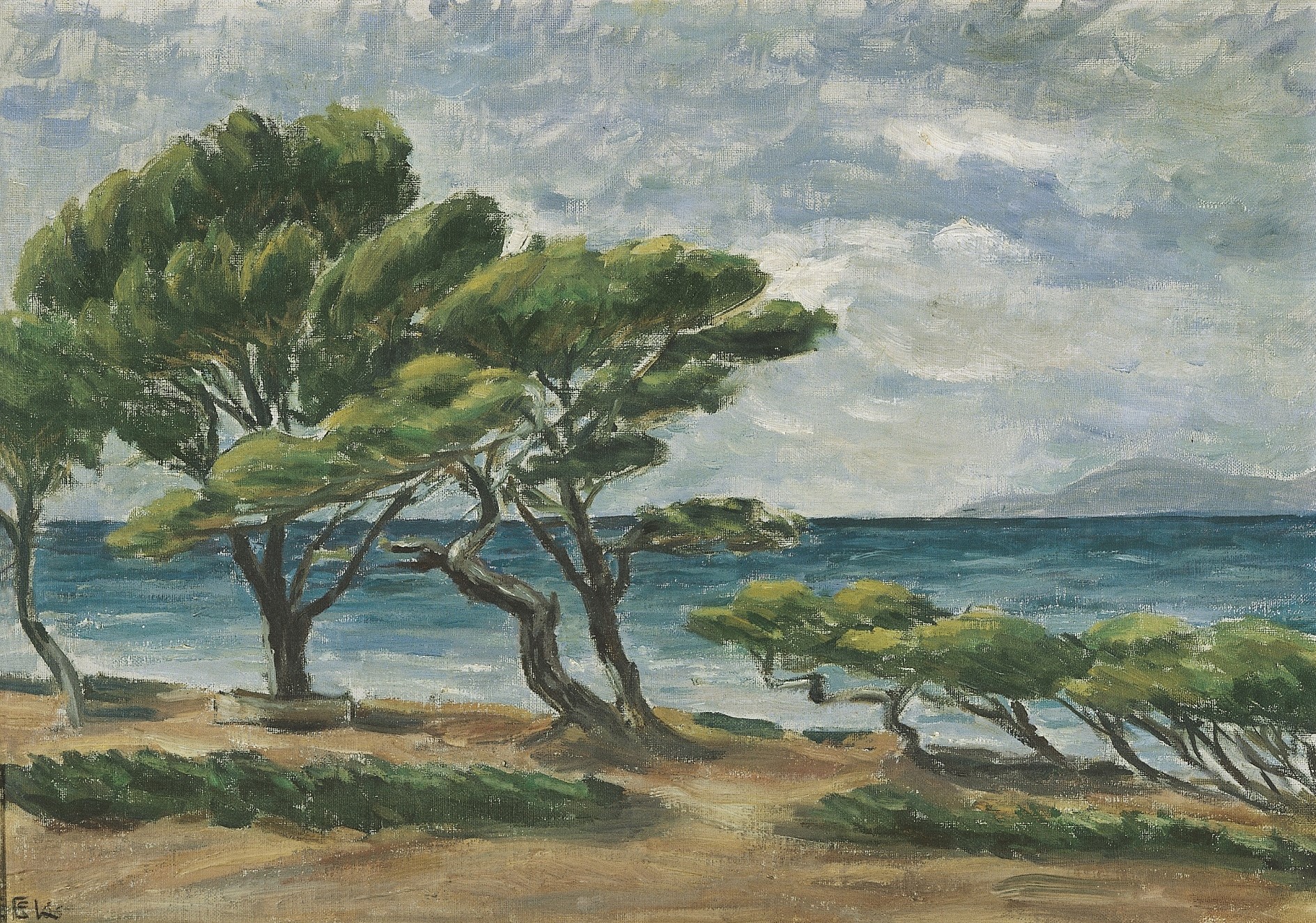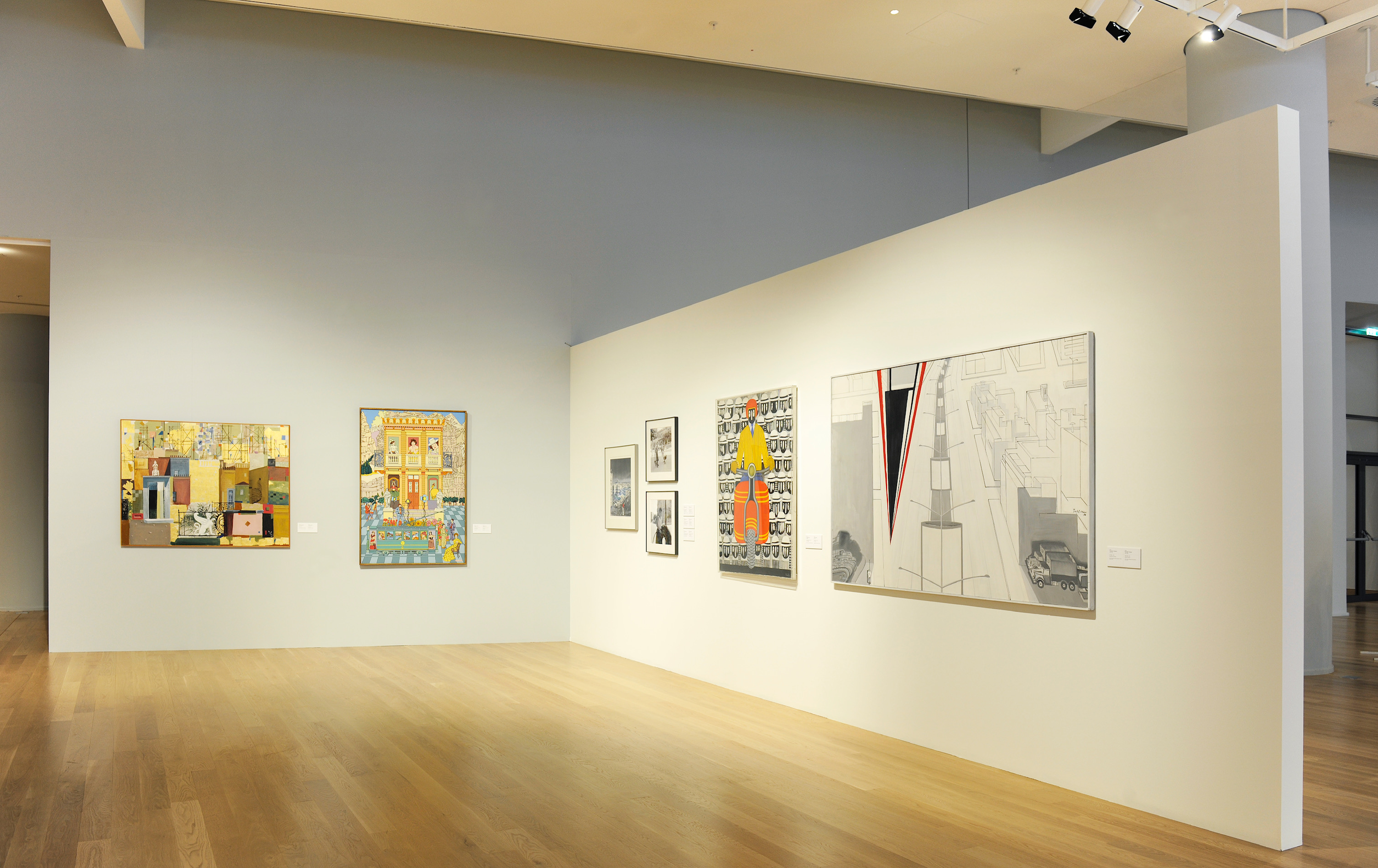Opening hours and tickets: Visit the Acropolis Museum page
Participation in the exhibition “Meanings”
The Alpha Bank Numismatic Collection has loaned 11 ancient, Roman and Byzantine coins to the exhibition “Meanings. Personifications and Allegories from Antiquity to Today”. The exhibition is being hosted in one of the most prominent museums of Greece, the Acropolis Museum. The coins depict ancient deities and originate from regions across Greece as well as Greek colonies.
11 unique coins
The Alpha Bank Numismatic Collection has loaned to the temporary exhibition at the Acropolis Museum entitled “Meanings. Personifications and Allegories from Antiquity to Today”:
- 9 ancient coins
- 2 Roman and Byzantine coins
Ancient coins
They include exquisite samples of ancient Greek coinage, as part of the “Deities” section of the exhibition:
- Silver didrachm, Rhodes, Karia, ca 304-166 BCE – The obverse depicts the head of the god Helios.
- Silver stater, Ilida, ca 432-421 BCE – The reverse depicts goddess Nike seated on a pedestal with her wings spread and a palm tree branch. The coin is mentioned in the Alpha Bank publication Money. Tangible Symbols in Ancient Greece.
- Silver tetradrachm, Gela, Sicily, ca 420-415 BCE – The reverse depicts river god Gelas in his typical form as a man-headed bull and the inscription ΓEΛA (of the people of Gela). The coin is mentioned in the Alpha Bank publication The Other Side of the Coin: Persons – Images – Moments.
- Silver stater, Laus, Lucania, 510-500 BCE – The obverse depicts a river deity as a man-headed bull looking back and the inscription ΛΑΖ. The coin is mentioned in the Alpha Bank publication Myth and Coinage. Representations, Symbolisms and Interpretations from the Greek Mythology.
- Silver stater, Neapolis, Campania, 325-275 BCE – The reverse depicts a river deity as a man-headed bull and the inscription [ΝΕ] ΟΠΟΛΙΤΩΝ (of the people of Neapolis/Naples).
- Silver stater, Thyrrheion, Akarnania, 168-160 BCE – The obverse depicts the river god Acheloos and the inscription ΜΕΝΑΝΔΡΟΣ. The coin is mentioned in the Alpha Bank publication The Other Side of the Coin: Persons – Images – Moments.
- Silver tetradrachm, Arados, Phoenicia, 137-46 BCE – It depicts goddess Tyche donning a turreted crown.
- Silver stater, Ierapytna, Crete, first third of 1 BCE – It depicts goddess Tyche donning a turreted crown. The coin is mentioned in the Alpha Bank publication Cretan Cities. The Testimony of Coins.
- Silver tetradrachm, Seleucia, Syria, 109/108 BCE – It depicts goddess Tyche donning a turreted crown.
Roman and Byzantine coins
1 Roman and 1 Byzantin coin are on display:
- Silver denarius of the Roman Republic, 110-109 BCE – The obverse depicts the head of Rome.
- Gold solidus of Arcadius, 383-408 CE – The reverse depicts Constantinople victorious and the inscription CONCORDI AAVGGA / CONOB.
Behind the Meanings
At the exhibition opening on 07.12.2023, the General Director of the Acropolis Museum and Exhibition Curator, Professor Nikolaos Stampolidis, explained the Greek word ΝοΗΜΑΤΑ (Meanings) in the exhibition title, elaborating on the use of the lower-case letter omicron:
“For ΝόΗΜΑ (meanings) to also be read as ΝΗΜΑ (thread), given that the exhibition theme, i.e. personifications and allegories, is the thread tying together the various eras, from antiquity to the present day.”
He also referred specifically to the personifications and allegories: “Greek culture is human-centric, meaning that people pictured the gods in the image and likeness of the themselves. Therefore, they personified concepts; most times, through these personified concepts and their symbolisms, a story takes shape, which is essentially an allegory.”
Read the speech by Professor Nikolaos Stampolidis (only available in Greek).
An artistic collage
The exhibition presents 165 small, medium and large pieces of art from various materials: coins, ceramics and clay pieces, vases, reliefs, statues, manuscripts and books, wall paintings and paintings.
The works represent various periods and art movements, from antiquity and the Byzantine era to the Renaissance and modern art. Many are on loan from major museums abroad. These include:
- Calumny of Apelles (1495, Renaissance) by Sandro Botticelli and his workshop, from the Uffizi Gallery collection, Florence
- Saturn devouring a son, (1636, Flemish Baroque) by PP Rubens, from the Prado Museum
- The Chimaera of Arezzo (400 BCE) from the National Archaeological Museum of Florence
- The Medias hydria (ca 410 BCE) from the British Museum
The sections of the exhibition
The exhibition is structured in 6 sections:
- Time
- Nature (geographical terms, celestial bodies)
- Deities (deified concepts of natural and human elements)
- Man and Human Nature (emotional, mental and physical conditions, emotions, spiritual works)
- Institutions (cities,community, democracy, violence, state, justice, ceremonies)
- Allegories
There is also an Epilogue.
